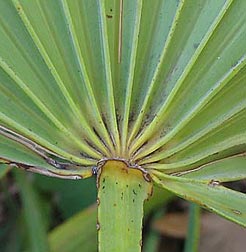browser.tabs.insertRelatedAfterCurrent
Use these commands to modify if new tabs opened fresh (with control + T) or related tabs (by clocking links).
browser.tabs.insertRelatedAfterCurrent
Use these commands to modify if new tabs opened fresh (with control + T) or related tabs (by clocking links).
he Web, sadly, defaults to 8 spaces which is an abomination for every snippet of code that would ike to be instantly readable on Mobile Phones too browsers don't provide a tab size setting anywhere (last time I've checked) to override that horrifying 8 spaces legacy nobody wants or need since tabs were invented
a later comment shows this is incorrect; we have CSS tab-size
I was pretty anti-tabs for the longest time, until I heard the best argument for them, accessibility. Tabs exist for indentation customization, and this is exactly what is needed for people with impaired sight. IMO, this is a pretty good argument for moving towards tabs.
Open the Safari app on your iPhone. Tap and hold the tabs icon, which looks like two overlapping boxes and appears in the bottom-right corner of your screen. In the pop-up menu, tap “Close All Tabs.” Confirm that you want to close all the open tabs in the browser by tapping “Close All Tabs.”
Long press on the tab button and select "close all"
The third way I interact with my notes is a mechanism I’ve engineered whereby they are slowly presented to me randomly, and on a steady drip, every day.I’ve created a system so random notes appear every time I open a browser tabI like the idea of being presented and re-presented with my notations of things that were interesting to me at some point, but that in many cases I had forgotten about. The effect of surprise creates interesting and productive new connections in my brain.
Robin Sloan has built a system that will present him with random notes from his archive every time he opens a browser tab.
What tabs would be particularly useful for is new music discovery, like an album you’ve been wanting to get around to hearing but haven’t yet had the time. I bump into this problem quite a bit. Adding a new album to my “Liked” songs on Spotify shuffles it in with all of my favorite stuff, and decluttering that playlist later is a hassle. Making a new album a playlist almost assures that it’ll be forgotten about. My decrepit, goldfish memory doesn’t have the space to remember to return to a playlist of an album two weeks later. As my colleague Victoria notes, she’s always “forgetting what I’m supposed to listen to next.” You know what would help with that? Tabs.
a pedagogy of small
I love this phrase. I am reminded of Robert Twigger's splendid book Micromastery. The subtitle to his book is "learn small, learn fast", i.e. pedagogies of small.
That takes me in a natural way to
Buckminster Fullers metaphor of the "trim tab". Ho loved that idea so much, he put it on his grave stone.
Let's find the trim tabs, the micromasteries, the small pedagogies that might work as we learn together. That is the kind of we-search I can support. Wholly.
Fig. 1 Terrestrial C residence time was approximately halved with experimental nutrient enrichment.
Photo of the landscape prior to experiment.
Fig. 2 Terrestrial C loss rates from stream reaches increased with N and P concentrations.
Graph illustrating the loss of terrestrial carbon.
herbarium specimens
A collection of preserved plant specimen used for specific scientific study. 
RA
hastula
The junction between the leaf and the stem blade. 
RA
Fig. 1 The lapping process. (A to F) Snapshots showing the movement of the tongue of F. catus and the dynamics of the liquid column during a lapping cycle. Lapping occurs by fluid adhesion to the dorsal part of the tongue's tip and by lifting a liquid column through the tongue's upward motion, before jaw closure. Time elapsed from the first frame is given in the top left corner of each frame. (G) Photograph of the dorsal side of the tongue of F. catus, acquired under anesthesia (16). Only the smooth tip is used in lapping.
Figure 1 Tabs
Major Question: Though we can picture a cat or dog lapping water, how can the use of high speed imaging show how cats are really getting water into their mouth?
High-speed Photography: The use of high speed photography allowed the researchers take a very quick process and see it stationary, step-by-step.
Results: Photograph A: the tongue is leaving the mouth to approach the liquid. Photograph B: the back of the tip of the tongue hit the top of the liquid, but do not penetrate the surface. Photograph C: as the cat's tongue is pulled back into it's mouth, the water below it is pulled up also forming a thin column which the cat will later trap into it's mouth. Photographs D-E: the column of water being held up by the water attaching to the tongue and it's shape is even maintained after the tongue retreats back into the mouth. Photograph F: the column of liquid falling back down into the water after a portion is taken up by the cat's mouth. Photograph G: the smooth area of the tongue is the only portion used in lapping. The roughness of the rest of the tongue would not allow it to use this technique to drink.
Next question: Though these images give us a mechanical understanding of the process of a cat's water intake, how can we quantify these results?